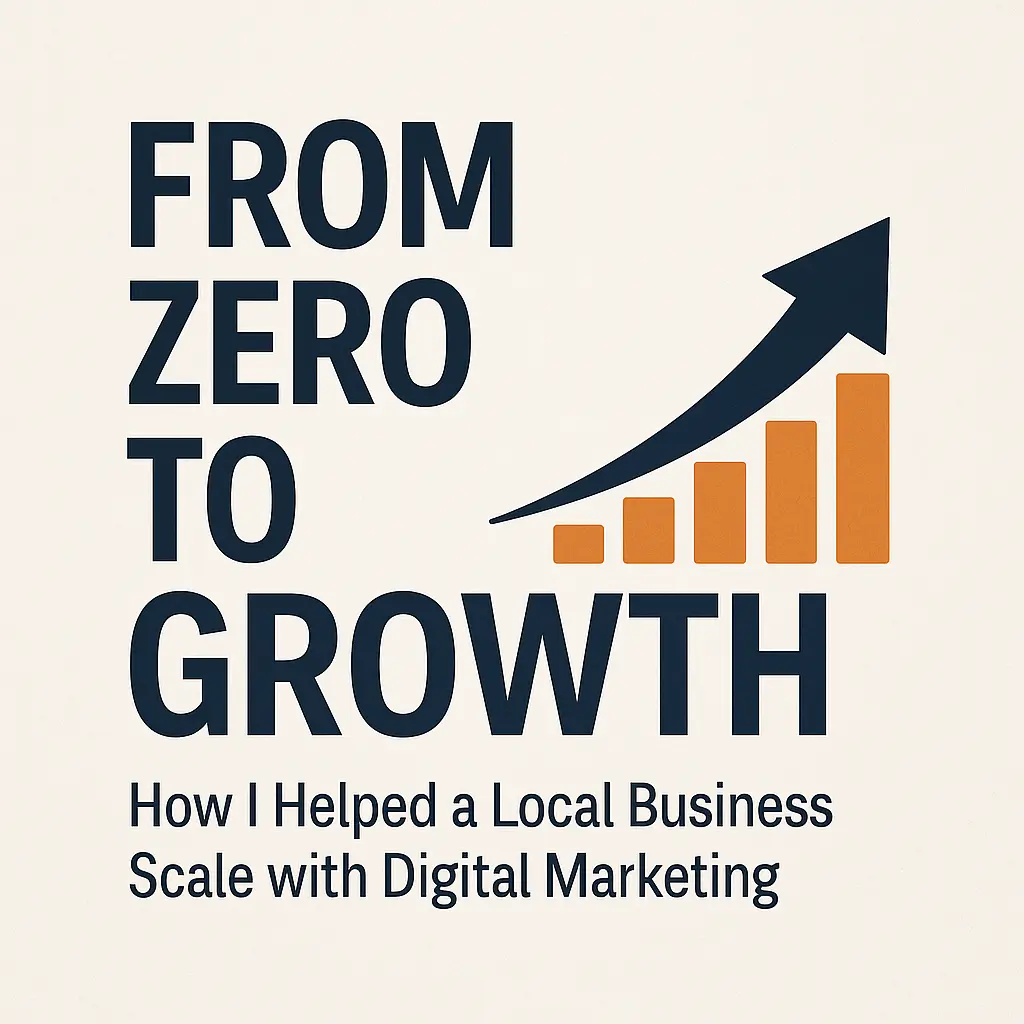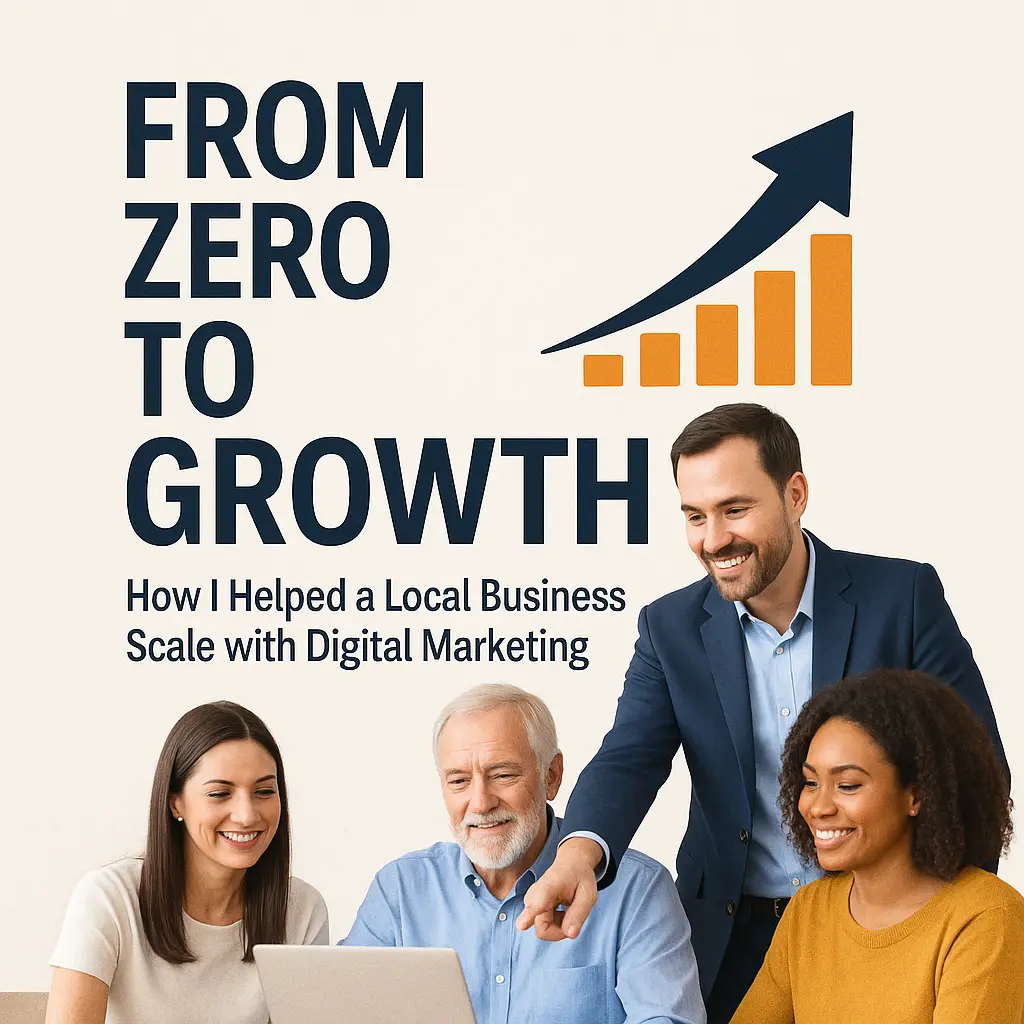I have consistently held the view that digital marketing serves as one of the most significant equalizers in the realm of business. In the past, only companies with huge budgets could get noticed. You needed billboards, radio ads, and magazine spreads—things that were far beyond the reach of a small business owner. But today, even a business with a modest budget can compete with industry giants if it uses the right online strategies. This belief was put to the test when I met a local business owner whose dream was hanging by a thread. They had products they believed in, but their sales were barely covering costs. They weren’t just struggling financially—they were mentally exhausted, unsure of what to try next, and dangerously close to giving up.
When they first reached out to me, they said something I’ll never forget: “I know my products are good, but no one knows about them.” And that’s exactly the problem I set out to solve. This is the story of how I took them from near-invisibility to steady, sustainable growth using a step-by-step digital marketing approach. It wasn’t about throwing money at ads or copying trends—it was about truly understanding their business, their customers, and the unique value they could offer.
The Starting Point: A Business at Zero
Every success story starts with a clear picture of the starting line. When I first assessed their situation, I saw the same problems I’ve seen in many small businesses. Their social media accounts were either inactive or posting without any real strategy. Their website was outdated, hard to navigate, and not optimized for mobile—despite the fact that most of their potential customers were browsing on their phones. They had no search engine visibility, which meant that when people looked online for the very products they sold, competitors were getting all the clicks and sales.
Even worse, there was no consistent brand identity. The logo, colors, and messaging varied across platforms, giving an unprofessional first impression. In today’s world, where people make snap judgments in seconds, that’s a dealbreaker.
We sat down and talked through their goals. They didn’t just want more sales; they wanted to be recognized in their community as the go-to brand in their category. They wanted people to see their products and immediately think of quality and trust. It was a big ambition, but ambition is the fuel that makes digital marketing work.

Understanding the Market and Target Audience
Before you can grow a business, you need to know exactly who you’re trying to reach. Too many businesses try to market to “everyone,” but in reality, that means they connect with no one. I explained to the owner that we needed to identify our ideal customer—the person most likely to love their products, talk about them, and come back for more.
I started with competitor analysis, looking at businesses that were doing well in the same niche. I studied their social media strategies, website content, and customer reviews. This gave us a sense of what was working in the market and where the gaps were. Then, I used tools like Google Trends and Facebook Audience Insights to gather real data on demographics, interests, and online behavior.
We discovered that our ideal audience wasn’t just “people in the city”—it was primarily women aged 25–45, interested in home decor, quality craftsmanship, and sustainable products. They valued aesthetics but also appreciated practical benefits. This insight shaped every marketing decision moving forward.
I also encouraged the business owner to talk to existing customers, even if there were only a few. Sometimes the best insights come directly from the people who’ve already bought from you. We learned that customers loved the product quality but often didn’t even know the business existed until a friend recommended it. That told me our biggest challenge wasn’t convincing people to buy—it was making sure they knew about us in the first place.

Building a Strong Online Presence
Once we knew who we were talking to, the next step was making sure they could find us—and that when they did, the business looked professional and trustworthy. Your website is your digital shop window. If it’s messy, outdated, or hard to navigate, customers will simply walk away—digitally speaking.
We rebuilt their website from scratch. It was clean, mobile-friendly, and designed to highlight the products with high-quality photos. I worked with the owner to write simple but engaging descriptions that spoke directly to our target audience’s needs. Every page had a clear call-to-action, whether it was “Shop Now,” “Contact Us,” or “Sign Up for Our Newsletter.”
At the same time, I worked on search engine optimization (SEO). We optimized the site with keywords like “[product] in [city]” so that people nearby would find us. I also set up and verified their Google Business Profile, added professional images, accurate opening hours, and encouraged customers to leave reviews. Within weeks, the business started appearing in local map results—a big step toward getting noticed.
Social Media Marketing
The business’s old social media approach was simply posting product pictures whenever they remembered to. That doesn’t work anymore. Social media is a place for conversation and connection, not just sales pitches.
I created a content calendar to ensure we were posting consistently. Our strategy was simple: mix product highlights with value-based content. We shared behind-the-scenes videos, customer testimonials, tips related to the product niche, and even lighthearted posts to engage followers.
On Instagram, we focused on visually appealing posts and interactive stories. On Facebook, we leveraged community groups and events to reach local audiences. Over time, engagement grew. People started tagging friends in posts, asking questions, and sharing our content. That organic engagement was priceless because it built trust.
Paid Advertising Campaigns
Organic growth is essential, but it can be slow. Paid ads can accelerate results—but only if done strategically. I set up targeted Facebook and Instagram campaigns aimed at people in our local area who matched our target demographics. Instead of generic ads, we created specific campaigns for specific goals: one for brand awareness, another for driving traffic to the website, and one for retargeting people who had visited but not purchased.
We started small, testing different headlines, images, and offers. Once we saw which ads delivered the best return on investment, we increased the budget. Alongside social ads, I also set up Google Ads to capture high-intent searches—people actively looking for the products we sold. This combination meant we reached both those who didn’t yet know they wanted our products and those ready to buy right now.
Content Marketing and Storytelling
People connect with stories far more than they connect with product specs. So, we began telling the brand’s story through blog posts, videos, and even short social media captions.
For example, we shared how the business started, the challenges they faced, and the passion behind each product. We created blog articles around topics our audience cared about—like “How to Choose the Perfect [product] for Your Home” and “5 Ways to Style Your [product].” Not only did this content connect emotionally, but it also helped with SEO by giving Google more reasons to send traffic to the site.
Email Marketing for Retention
I set up an email marketing system to nurture relationships with customers and keep the brand top of mind. We created a simple opt-in on the website offering a 10% discount for first-time subscribers.
Our emails weren’t just about sales. We shared helpful tips, customer stories, and sneak peeks of upcoming products. This made subscribers feel like insiders, and it worked—many customers returned to make repeat purchases.
Measuring and Improving with Analytics
One of the most important parts of digital marketing is tracking your results. Without data, you’re just guessing. I set up Google Analytics, Facebook Insights, and ad tracking pixels to monitor everything from website traffic to conversion rates.
Whenever a campaign underperformed, we adjusted it. If a type of post got more engagement, we created more of it.
The Results: From Struggling to Thriving
The transformation didn’t happen overnight, but within six months, the change was undeniable. The business’s website traffic tripled. Social media followers grew steadily, with engagement rates far above the industry average. Sales were no longer sporadic—they were consistent, and many came from customers who had never set foot in the physical store.
Perhaps the biggest change was in the owner’s confidence. They no longer felt invisible; they felt like they had control over their growth. They could see what was working, and they had the tools to keep building.
Lessons Learned
This experience reinforced something I tell every business owner: digital marketing works best when you truly understand your audience, show up consistently, and adapt based on results. It’s not about having the biggest budget—it’s about having the right strategy.
Small businesses often fail not because they lack quality but because they fail to reach the right people. Digital marketing bridges that gap. And when you combine creativity with data-driven decisions, you can turn “zero” into “growth.”
Conclusion
Looking back, this journey wasn’t just about driving sales—it was about transforming the way a business thought about growth. When we started, the owner was stuck in survival mode, unsure of how to connect with potential customers. Today, they’re not only making consistent sales but also enjoying a reputation as a trusted local brand. This change didn’t come from luck or a one-time trick—it came from consistent, strategic actions.
We took time to understand their market, built a professional online presence, engaged genuinely on social media, ran targeted campaigns, and kept improving based on data. Every step was rooted in the question: “How can we give more value to the people we serve?” That mindset turned casual viewers into loyal customers and put the business on a steady growth path.
This experience proves that any business—no matter how small—can succeed in the digital world if they commit to the process. Digital marketing is not just about algorithms, ads, or trends; it’s about people. It’s about telling your story in a way that connects, building trust through consistency, and showing up where your customers spend their time. Going from zero to growth is never an overnight miracle—it’s a journey of persistence, creativity, and adaptation. This local business proved it can be done, and if they can do it, so can you. The first step is simply deciding to start, and when you’re ready to take that leap, I’ll be here to help guide you from “unnoticed” to “unmissable.”

